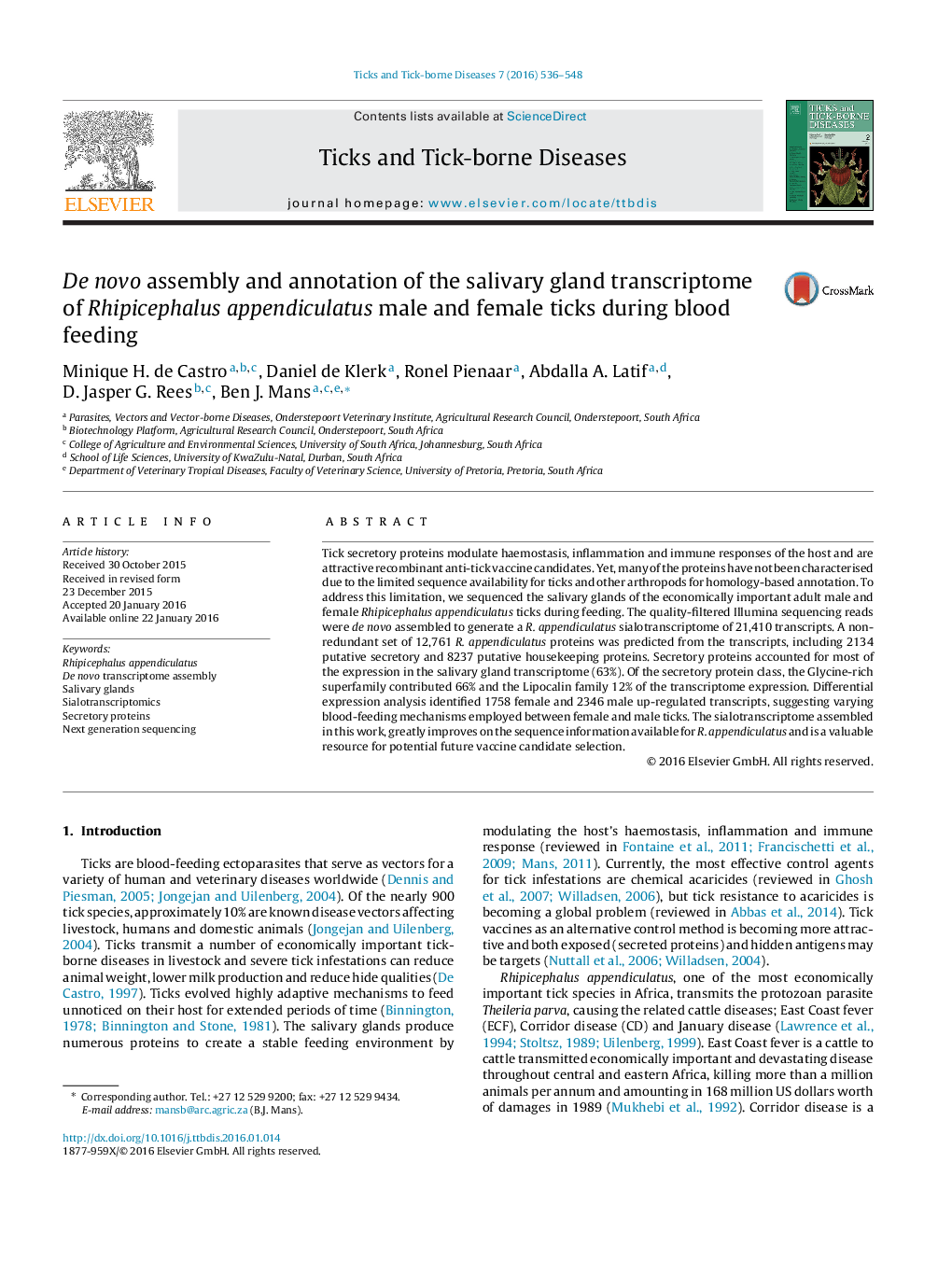| Article ID | Journal | Published Year | Pages | File Type |
|---|---|---|---|---|
| 5806987 | Ticks and Tick-borne Diseases | 2016 | 13 Pages |
Tick secretory proteins modulate haemostasis, inflammation and immune responses of the host and are attractive recombinant anti-tick vaccine candidates. Yet, many of the proteins have not been characterised due to the limited sequence availability for ticks and other arthropods for homology-based annotation. To address this limitation, we sequenced the salivary glands of the economically important adult male and female Rhipicephalus appendiculatus ticks during feeding. The quality-filtered Illumina sequencing reads were de novo assembled to generate a R. appendiculatus sialotranscriptome of 21,410 transcripts. A non-redundant set of 12,761 R. appendiculatus proteins was predicted from the transcripts, including 2134 putative secretory and 8237 putative housekeeping proteins. Secretory proteins accounted for most of the expression in the salivary gland transcriptome (63%). Of the secretory protein class, the Glycine-rich superfamily contributed 66% and the Lipocalin family 12% of the transcriptome expression. Differential expression analysis identified 1758 female and 2346 male up-regulated transcripts, suggesting varying blood-feeding mechanisms employed between female and male ticks. The sialotranscriptome assembled in this work, greatly improves on the sequence information available for R. appendiculatus and is a valuable resource for potential future vaccine candidate selection.
